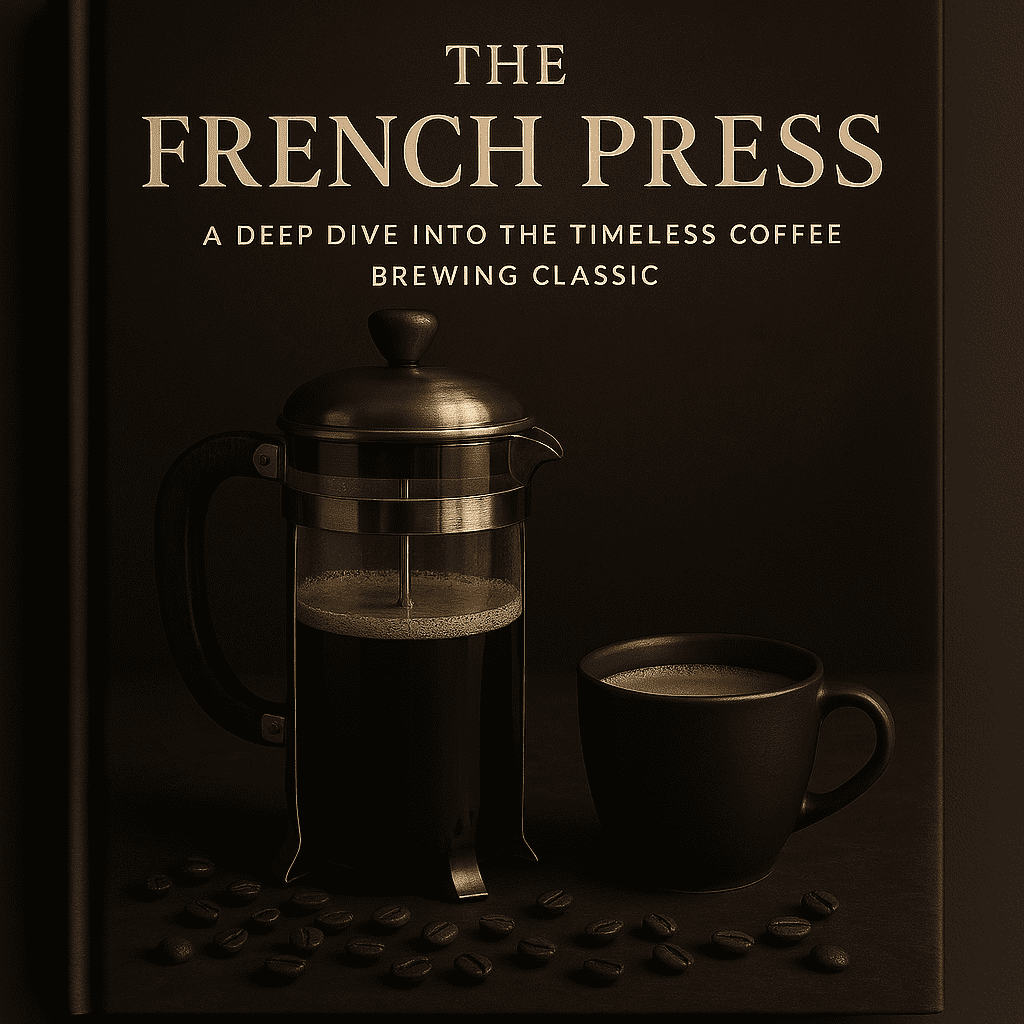The French Press, also known as a press pot or plunger pot, is one of the most beloved and iconic manual coffee brewers in the world. Revered for its simplicity, elegance, and ability to produce a full-bodied cup of coffee, it has carved a special place in both home kitchens and specialty coffee circles.
In this article, we’ll explore the unique charm of the French Press, how it works, its global influence, and why it’s still a favorite despite the rise of modern coffee machines.
What Is a French Press?
The French Press is a manual brewing device that consists of a cylindrical glass or stainless steel container, a metal or plastic lid with a plunger, and a fine mesh filter. It allows coffee grounds to steep directly in hot water before being separated by pressing the plunger down.
Invented in the 1920s and popularized in France and Italy, it offers an immersion brewing process that extracts rich flavors and oils from the coffee beans—unlike any drip or filtered method.
Why Coffee Enthusiasts Love the French Press
The French Press is cherished by coffee lovers around the world for several reasons:
- Full-bodied flavor: No paper filter means essential oils and fine particles remain in the cup.
- Control over brewing variables: Adjust water temperature, grind size, and steeping time.
- Simplicity and elegance: Minimalist design, no electricity required.
- Affordable and durable: Long-lasting, low-maintenance coffee solution.
It’s a favorite for those who enjoy the hands-on process and a rich, textured cup of coffee.
Step-by-Step Guide to Brewing with a French Press
To brew perfect French Press coffee, follow these steps:
- Boil water to about 195–205°F (90–96°C).
- Grind coffee beans to a coarse consistency.
- Use a 1:15 coffee-to-water ratio (e.g., 30g coffee to 450ml water).
- Add coffee to the press, pour hot water evenly.
- Let it bloom for 30 seconds, then stir gently.
- Place the lid and let it steep for 4 minutes.
- Slowly press the plunger all the way down.
- Pour immediately to avoid over-extraction.
Flavor Profile of French Press Coffee
- Full-bodied and bold
- Slightly gritty mouthfeel (from micro-grounds)
- Rich aroma and deep character
- Less acidic than drip methods
The lack of a paper filter allows oils to pass into the final cup, which enhances mouthfeel and flavor complexity.
French Press Coffee Around the World
While commonly associated with European coffee culture, the French Press is used globally:
- France & Italy: Often served alongside breakfast or desserts.
- North America: A favorite among home brewers for weekend rituals.
- Scandinavia: Integrated into minimalist coffee routines.
- Asia: Gaining popularity among third-wave cafés.
Each region adapts it slightly—some favor darker roasts, others lighter ones.
Choosing the Best Coffee Beans for French Press
The ideal beans depend on personal preference, but here are some general tips:
- Medium to dark roasts enhance the richness of immersion brewing.
- Single-origin coffees can highlight fruit or chocolate notes.
- Freshly ground beans are essential for flavor and aroma.
Top picks:
- Sumatra Mandheling (earthy, bold)
- Colombian Supremo (nutty, smooth)
- Ethiopian Yirgacheffe (floral, fruity)
Maintaining Your French Press
To keep your French Press in excellent condition:
- Clean after every use with warm water and mild soap.
- Disassemble the plunger regularly to remove trapped grounds.
- Avoid dishwashers (unless stated as dishwasher-safe).
- Check for wear on the mesh screen and replace as needed.
A clean press equals a cleaner, better-tasting brew.
Common Mistakes to Avoid
Even seasoned users sometimes make these mistakes:
- Using too fine a grind – leads to over-extraction and sediment.
- Steeping too long – results in bitterness.
- Not preheating the carafe – causes temperature loss.
- Leaving coffee sitting in the pot – leads to sour taste.
With a little attention, each cup can be consistent and delicious.
Variations in Design and Style
Today’s French Presses come in different materials and styles:
- Glass: Classic and elegant, but fragile.
- Stainless steel: Durable and heat-retaining.
- Ceramic or copper: Stylish and artistic.
- Travel Presses: Portable versions for on-the-go brewing.
Top brands include Bodum, Espro, Stanley, Frieling, and Le Creuset.
Sustainable Brewing with a French Press
Environmentally conscious coffee lovers appreciate:
- No paper filters needed
- No pods or plastic waste
- Minimal energy use
- Long-lasting materials
It aligns perfectly with zero-waste and low-impact lifestyles.
Enhancing Your Coffee Ritual
Many find joy in turning French Press brewing into a daily ritual:
- Grinding beans fresh
- Using a gooseneck kettle for precision pouring
- Sipping slowly while journaling or reading
- Sharing a pot with friends or family
It’s not just about the coffee—it’s about the moment.
